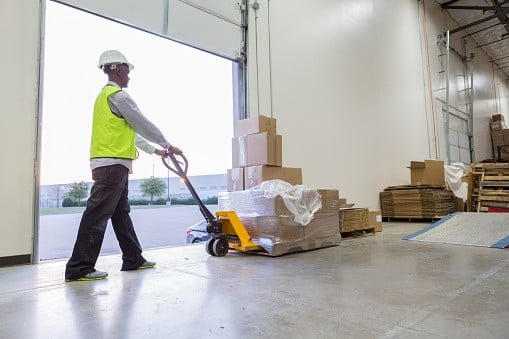
The Bureau of Labor Statistics reports that in 2018, more than 220,000 nonfatal injuries occurred in warehouses across the United States. The injury rate in warehouses is currently 5.1 per 100 full-time workers.
According to EHS Today, more warehouses are popping up all over the nation. The number of warehouses being opened each year has jumped from 11 in 2015 to 22 in 2017.
Historically, workers have sustained injuries due to:
- Forklift accidents
- Slip and fall accidents
- Exposure to hazardous chemicals
- Being struck by falling inventory
- Pallet collapses
- Heavy or repeated lifting
Addressing new challenges in warehouse safety
As automation increasingly replaces manual labor, more workers are sustaining injuries due to accidents involving machines. What’s worse, many companies are behind the curve when it comes to modernized safety.
ESH Today identifies these key areas for improving warehouse safety:
- Budgeting: One of the most prevalent problems warehouses face is the need for efficiency and productivity over safety. Workers are encouraged to meet demands, and sometimes, cut corners in the process. All hazards should be thoroughly inspected, documented and addressed. This can be done by making safety just as important as productivity. Companies can also establish a digital platform to streamline reporting of hazards.
- Addressing exit and storage hazards: Warehouse doorways and exits are critical for escaping from or responding to incidents. The ability for workers to act quickly in an emergency situation can be obstructed when large boxes, containers, and other clutter blocks doorways. Not only is it dangerous, but it’s also unacceptable by OSHA standards (pursuant to standard 29 CFR 1910 Subpart E).
- Promoting healthy ergonomics: Repetitive stress injuries often result from poor workplace ergonomics. Warehouse workers spend hours performing the same movements, which over time, can lead to musculoskeletal disorders. This can be prevented by altering work stations, flooring, and seating to accommodate comfort and efficiency.
- Providing adequate training: Warehouse workers should receive adequate and ongoing training on topics such as forklift and pallet jack safety, communicating hazards, electrical and wiring hazards, exit and aisle hazards, machine hazards, respiratory protection, and ergonomics.
Know your rights if you were hurt on the job
If you were hurt while working in a warehouse, you may be entitled to workers’ compensation benefits while you’re unable to perform your job functions. The legal team at Kotlar, Hernandez & Cohen, LLC has been handling cases like yours for more than 20 years. We know how the system works and how to negotiate for a fair settlement while you focus on recovery.
Contact us online to get started on your claim. We serve clients across New Jersey, as well as in Pennsylvania.


